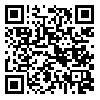Volume 79, Issue 1 (April 2021)
Tehran Univ Med J 2021, 79(1): 10-17 |
Back to browse issues page
Download citation:
BibTeX | RIS | EndNote | Medlars | ProCite | Reference Manager | RefWorks
Send citation to:



BibTeX | RIS | EndNote | Medlars | ProCite | Reference Manager | RefWorks
Send citation to:
Naderi Yaghouti A R, Shalbaf A, Maghsoudi A. Automatic classification of Non-alcoholic fatty liver using texture features from ultrasound images. Tehran Univ Med J 2021; 79 (1) :10-17
URL: http://tumj.tums.ac.ir/article-1-11130-en.html
URL: http://tumj.tums.ac.ir/article-1-11130-en.html
1- Department of Biomedical Engineering, Science and Research Branch, Islamic Azad University, Tehran, Iran.
2- Department of Biomedical Engineering and Medical Physics, School of Medicine, Shahid Beheshti University of Medical Sciences, Tehran, Iran.
2- Department of Biomedical Engineering and Medical Physics, School of Medicine, Shahid Beheshti University of Medical Sciences, Tehran, Iran.
Abstract: (2008 Views)
Background: Accurate and early detection of non-alcoholic fatty liver, which is a major cause of chronic diseases is very important and is vital to prevent the complications associated with this disease. Ultrasound of the liver is the most common and widely performed method of diagnosing fatty liver. However, due to the low quality of ultrasound images, the need for an automatic and intelligent classification method based on artificial intelligence methods to accurately detect the amount of liver fat is essential. This paper aims to develop an advanced machine learning model based on texture features to assess liver fat levels based on liver ultrasound images.
Methods: In this analytic study, which is done from April to November 2020 in Tehran, ultrasound images of 55 obese people who have undergone laparoscopic surgery have been used and the histological result of a liver biopsy has been employed as a reference for liver fat. First, 88 texture-based features were extracted from the images using the Gray-Level Co-Occurrence Matrix (GLCM) method. In the next step, using the method of minimum redundancy and maximum correlation, the top features were selected from among 88 features and applied to the classifier input. Finally, using the three classifiers of linear discriminant analysis, support vector machine and AdaBoost, the images were classified into 4 groups based on the amount of liver fat.
Results: The accuracy of the automatic liver fat prediction model from ultrasound images for AdaBoost classification was 92.72%. However, the accuracies obtained for support vector machine and linear discriminant analysis classification were 87.88% and 75.76%, respectively.
Methods: In this analytic study, which is done from April to November 2020 in Tehran, ultrasound images of 55 obese people who have undergone laparoscopic surgery have been used and the histological result of a liver biopsy has been employed as a reference for liver fat. First, 88 texture-based features were extracted from the images using the Gray-Level Co-Occurrence Matrix (GLCM) method. In the next step, using the method of minimum redundancy and maximum correlation, the top features were selected from among 88 features and applied to the classifier input. Finally, using the three classifiers of linear discriminant analysis, support vector machine and AdaBoost, the images were classified into 4 groups based on the amount of liver fat.
Results: The accuracy of the automatic liver fat prediction model from ultrasound images for AdaBoost classification was 92.72%. However, the accuracies obtained for support vector machine and linear discriminant analysis classification were 87.88% and 75.76%, respectively.
|
Conclusion: The proposed approach based on texture features using the GLCM and the AdaBoost classification from ultrasound images automatically detects the amount of liver fat with high accuracy and can help physicians and radiologists in the final diagnosis.
|
Type of Study: Original Article |
| Rights and permissions | |
 |
This work is licensed under a Creative Commons Attribution-NonCommercial 4.0 International License. |





